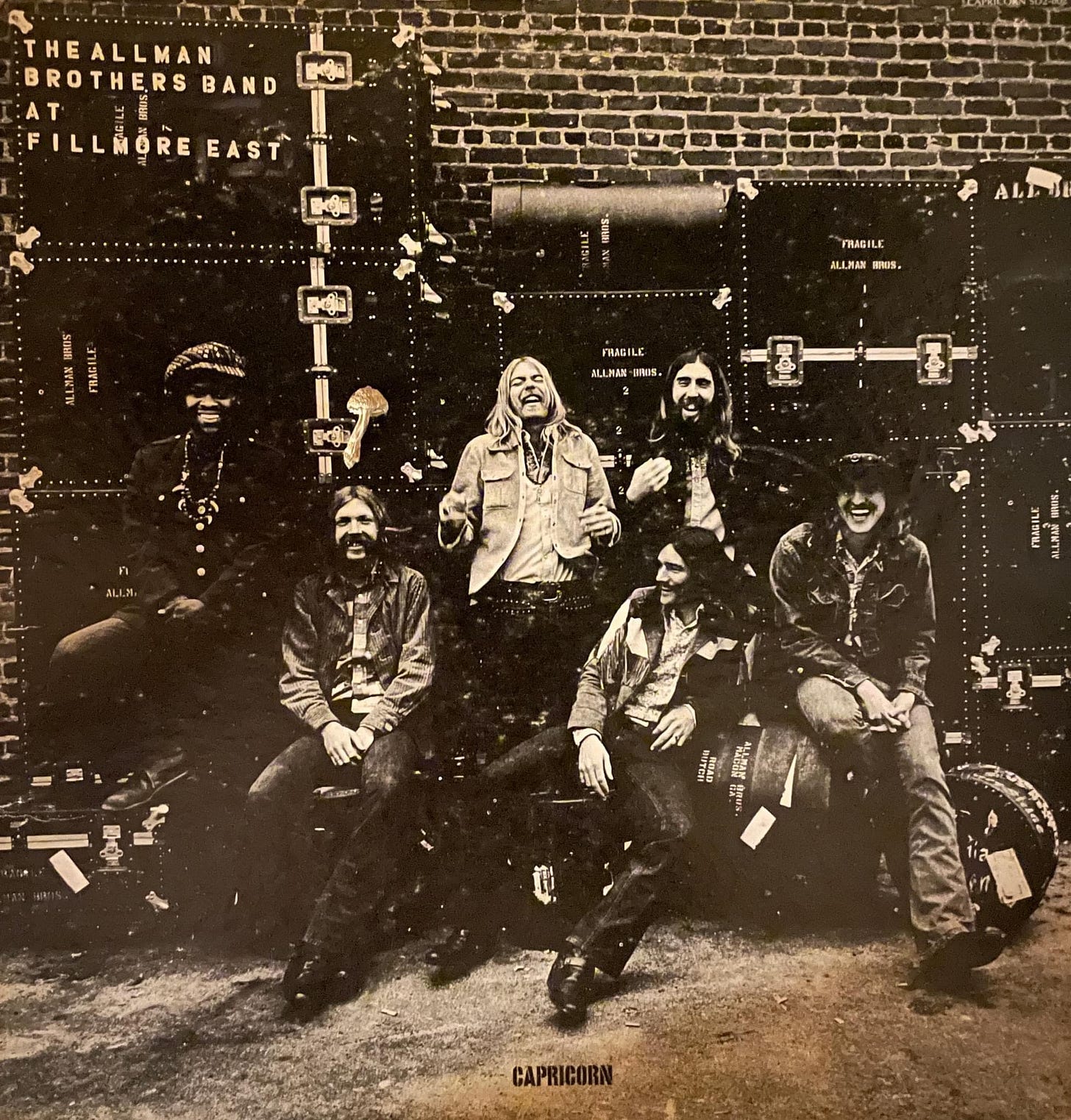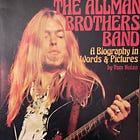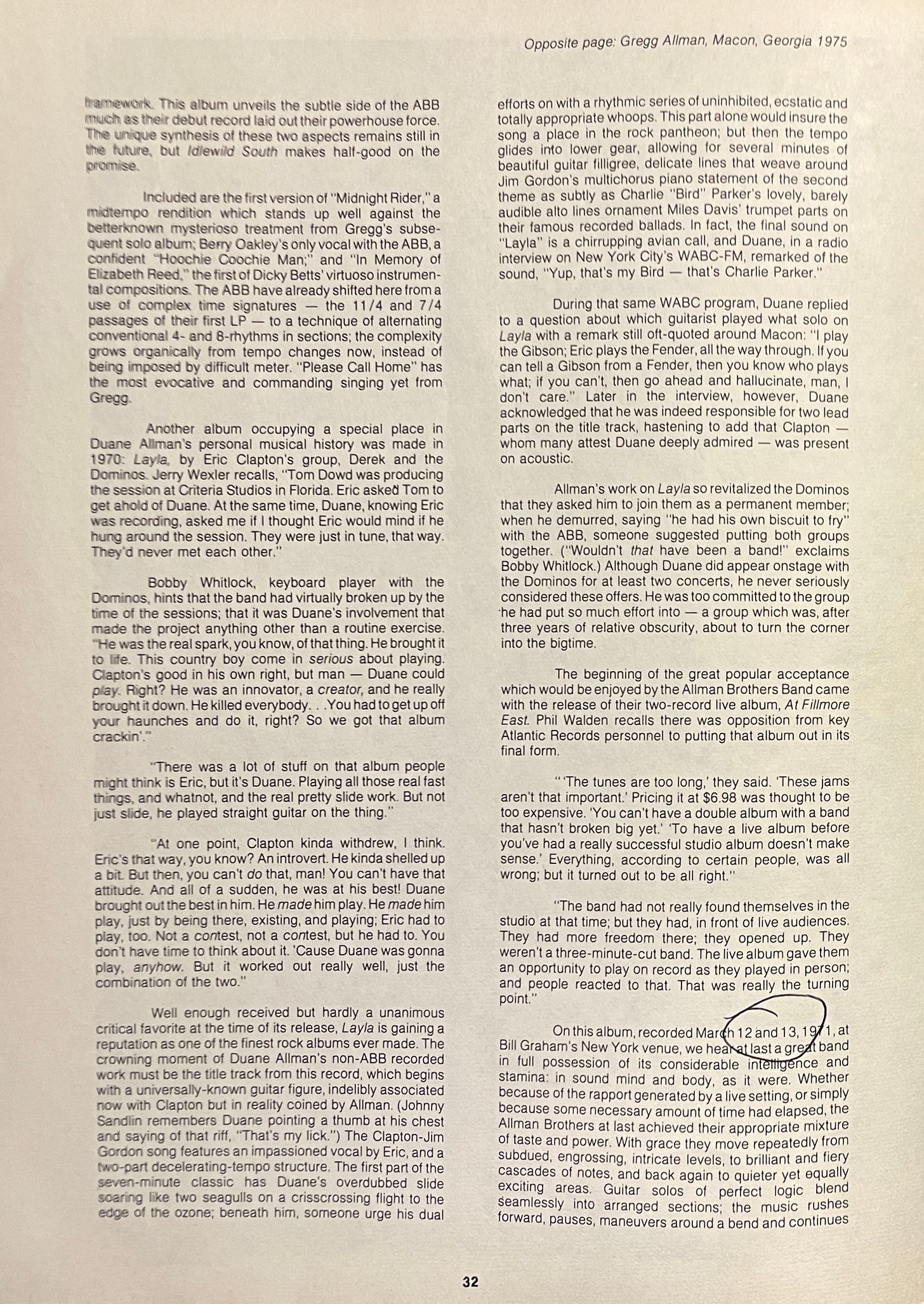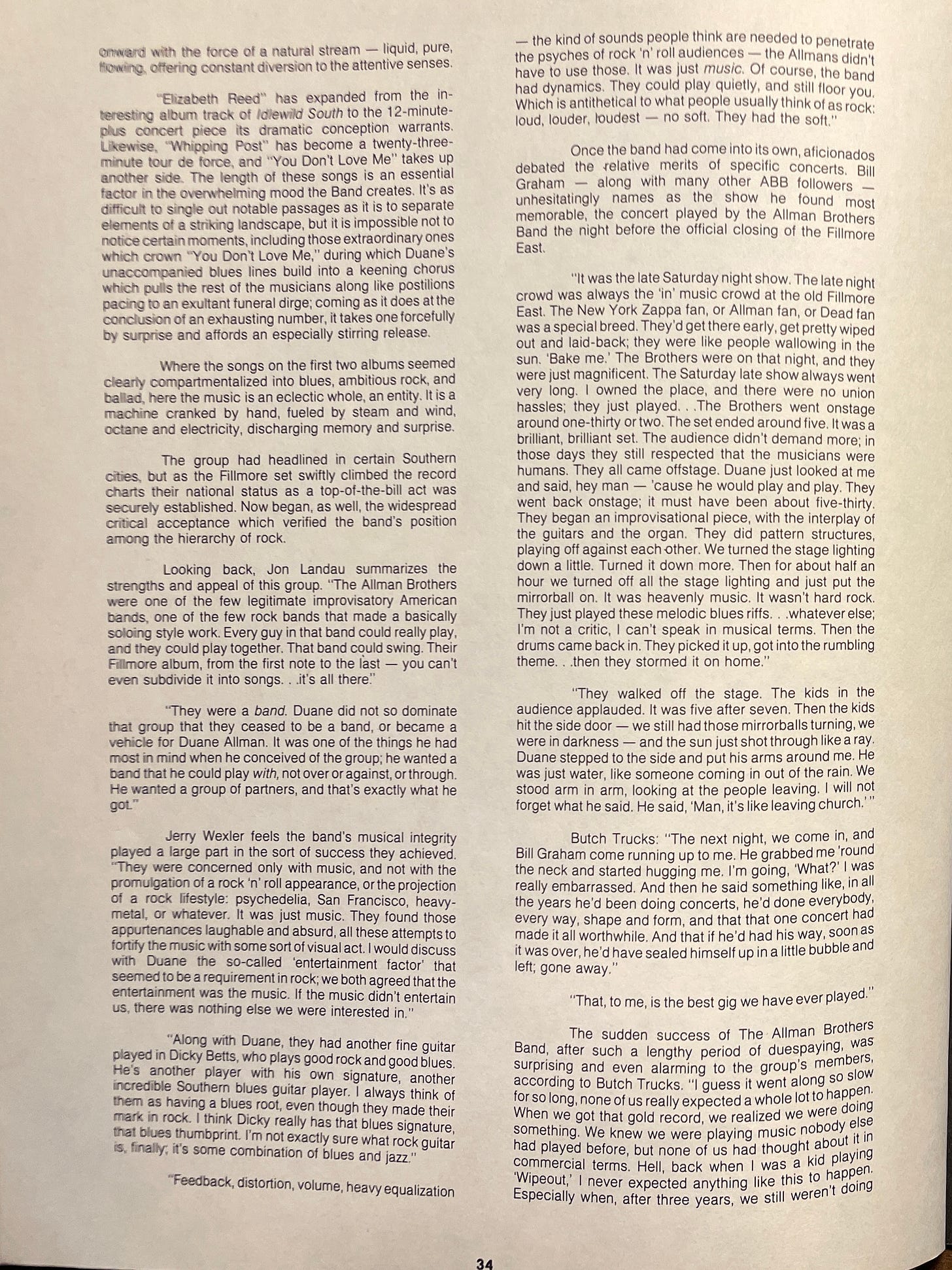The live album gave them an opportunity to play on record as they played in person
🍄That was really the turning point
Returning to my marginalia series for paid subscribers.
An annotated read of Tom Nolan’s 1976 book, Allman Brothers Band: A Biography in Words and Pictures. This is Part 13: At Fillmore East.
Here are Parts 1-12.
Previously on Long Live the ABB…
Allman’s work on Layla so revitalized the Dominos that they asked him to join them as a permanent member; when he demurred, saying “He had his own biscuit to fry” with the ABB. Someone suggested putting both groups together. “Wouldn’t that have been a band!” exclaims Bobby Whitlock.
Although Duane did appear onstage with the Dominos for at least two concerts, he never seriously considered these offers.
He was too committed to the group he had put so much effort into—a group which was, after three years of relative obscurity, about to turn the corner into the bigtime.
Duane definitely gave the offer serious consideration. I mean, who in their right mind would turn down Eric Clapton?!
“I really don’t know what to do,” he wrote his wife Donna. “It would mean about $5,000 a week to us, as well as a home in England and a lot of things we’d like to have. . . . I’m really up in the air right now.”
Jaimoe knew “Duane had more going playing with us than with Eric.”
Duane agreed. The following spring, March 12-13, 1971, he and his band recorded their landmark album: At Fillmore East.
Marginalia Reminder
As you read, remember:
The book’s text is in this font
My commentary (marginalia) is in this font.
Here are the actual pages from the book (basically the 2nd column on p32 and the first column on p34). Full text available here.
The beginning of the great popular acceptance which would be enjoyed by the Allman Brothers Band came with the release of their two-record live album: At Fillmore East.
Phil Walden recalls there was opposition from key Atlantic Records personnel to putting that album out in its final form.
“The tunes are too long,” they said. “These jams aren’t that important.”
Pricing it at $6.98 was thought to be too expensive.
“You can’t have a double album with a band that hasn’t broken big yet. To have a live album before you’ve had a really successful studio album doesn’t make sense.”
Everything, according to certain people, was all wrong; but it turned out to be all right.
The band had not really found themselves in the studio at that time; but they had, in front of live audiences. They had more freedom there; they opened up. They weren’t a three-minute-cut band.
The live album gave them an opportunity to play on record as they played in person; and people reacted to that. That was really the turning point.
Here’s Phil Walden telling this same story from a CMT documentary released in the 00s. The whole thing is fantastic, but this snippet is gold.1
I’ve got it queued up to the point Walden recounts his conversation with Wexler, his Capricorn Records partner and Atlantic Records’ executive.
Keep reading with a 7-day free trial
Subscribe to Long Live the ABB: Conversation from the Crossroads to keep reading this post and get 7 days of free access to the full post archives.




